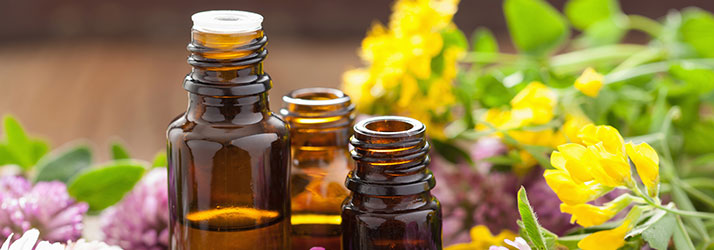A Snapshot Of Each Ingredient
A snapshot of each ingredient

Full Spectrum Oil
CBD is one cannabinoid but the therapeutic property of the plant resides in the profile of the whole plant, including cannabinoids, terpenes, fatty acids, Vitamins A,C,E & B and amino acids. The synergistic profile of a full spectrum product brings the Endocannabinoid System (ECS) into balance, which improves recovery time and reduces inflammation.
Cramp Bark
The understanding of Cramp bark dates back to its traditional use mainly by the Native Americans. An extract made from its bark & roots was often used to treat a variety of cramps. The chemical constituents of the plant, esculetin and viopudial, are known to be antispasmodic thereby easing muscular/smooth muscle spasms. Cramp bark is also believed to have anti-inflammatory and calming properties.
Magnesium
Magnesium is the number one mineral the body needs. It’s also the mineral 80% of Americans are deficient in. It plays a role in neuromuscular transmission and contraction. Therefore, magnesium deficiency may predispose someone to muscle cramps.
Shea Butter
In traditional tribal medicine, Shea butter was used to treat arthritis and joint pain. It continues to be used as a salve throughout the world and has been shown to reduce the risk of infection. It moisturizes, hydrates, reduces inflammation and helps to build up the skin barrier. This is a perfect carrier foundation for the magnesium, cramp bark and CBD isolate.
Ashwagandha
Traditionally used in Ayurveda to calm the nerves and enhance internal stamina. It’s considered a tonic and an adaptogen. It’s quite rare that herbs fit into both categories. Tonic means to tonify or strengthen. Adaptogen allows the body to conserve energy and adapt to stress. Ashwagandha is supportive in both calming and strengthening the nerves, adrenals and immune system.
- Calms the stress response in adrenals & reduces cortisol
- Reduces symptoms of depression
- Strengthens nervous system & improves resilience
- Improves sleep latency & sleep quality
- Calms the nervous system
Kava
Kava is native to the Pacific Islands and has been traditionally used for ceremonial & medicinal purposes for thousands of years. Traditional uses of the herb were for its soothing and relaxing effects. It is now one of the top herbs for Generalized Anxiety Disorder (GAD) as it has been shown to relax muscles as well as the nerves. Research is continuing to support Kava’s traditional use in showing its effects in improving sleep and reducing sleeplessness.
- Promotes a state of relaxation
- Promotes elevated mood with euphoric effect
- May increase coping ability
- Promotes deep sleep & delta brain waves
- Protects neurons from damage
Skullcap
Referred to as a nerve tonic, it helps restore energy to the nerves and brain. It’s used often when there’s either mental or physical exhaustion. It has been shown to improve sleep patterns. Skullcap is trophorestorative, meaning it helps to restore/repair the cells it’s working on. Some herbs help initiate change in cellular function but herbs that are trophorestorative also help to restore the inner workings of the cell itself.
- Improves sleep patterns
- Nourishes & calms nerves
- Restores & repairs energy to the brain
Magnolia
Magnolia is a flowering tree native to China. The plant’s therapeutic benefit originates in traditional Chinese, Japanese and Korean medicine. At the time, it was used to promote sleep and relaxation, to ease anxiety, and also to treat allergies & asthma. Today, it has been shown that certain women have receptors for magnolia. When this is the case, Magnolia bark plays a crucial role in supporting healthy sleep patterns. It has antioxidant benefits, helps improve GABA (a neurotransmitter that exerts a calming effect), and activates cannabinoid receptors. Research has shown at least one bioactive compound in magnolia bark can increase the amount of time you spend in both REM sleep, and reduce the time it takes you to fall asleep.
- Supports healthy sleep patterns
- Shown to improves the amount of time in REM sleep
- Reduces the time it takes to fall asleep
CBG
A minor cannabinoid with major potential! Cannabidiol (CBD) is the dominant phytocannabinoid, yet the hemp plant contains over 100 different phytocannabinoids. Cannabigerol (CBG) is referred to as the mother of all cannabinoids. It can bind to both receptors CB1 and CB2, amplifying the effects of anandamide (one of the two endocannabinoids the body makes), the bliss molecule, which is responsible for affecting motivation, appetite, sleep, pleasure, and pain. Cannabinoids we produce are called endocannabinoids whereas cannabinoids we ingest from plants are called phytocannabinoids. CBG has been shown to be antibacterial, anti-inflammatory, neuroprotective, and antitumor. It also has no psychotropic effects.
- May help to support focus
- May help to support a normal stress response by the breakdown of GABA
- Works to fight inflammation, pain, and nausea
- Binds the CB1 & CB2 receptors to relay messages within the ECS


